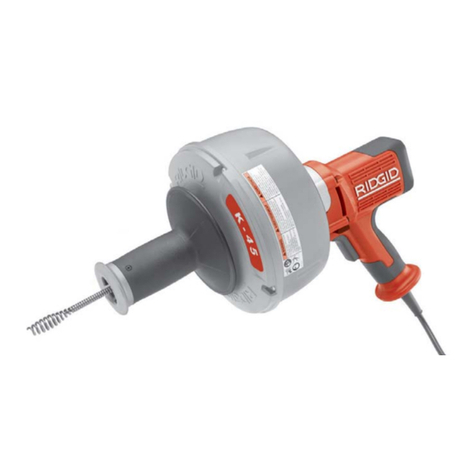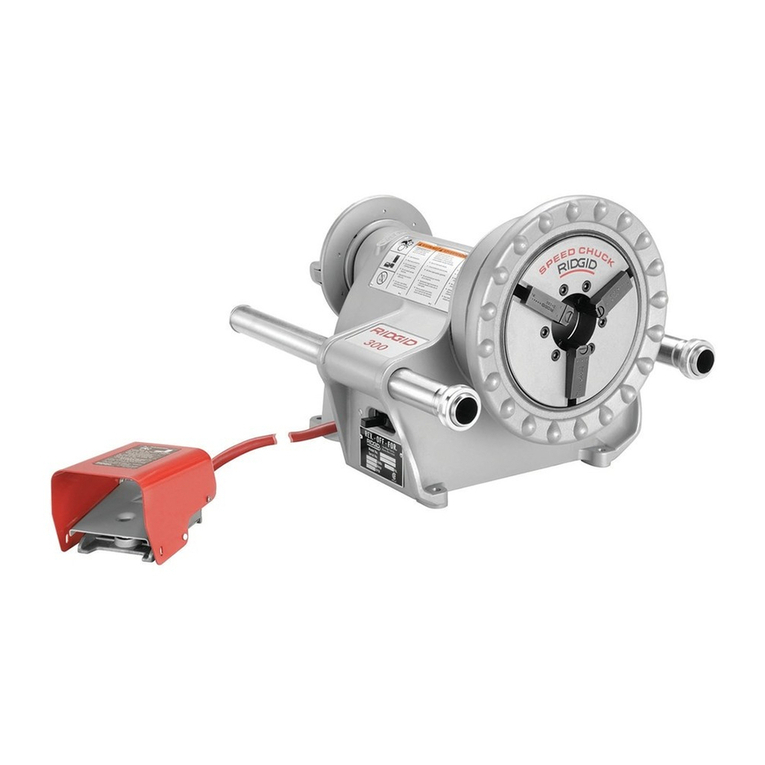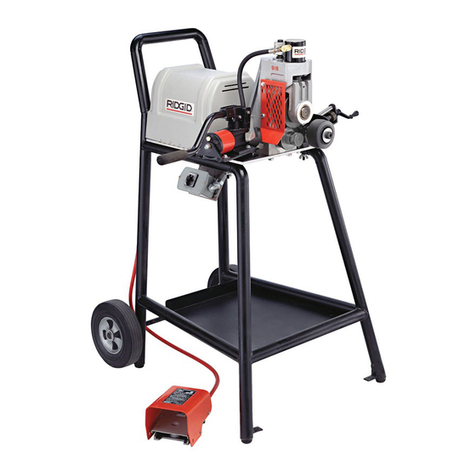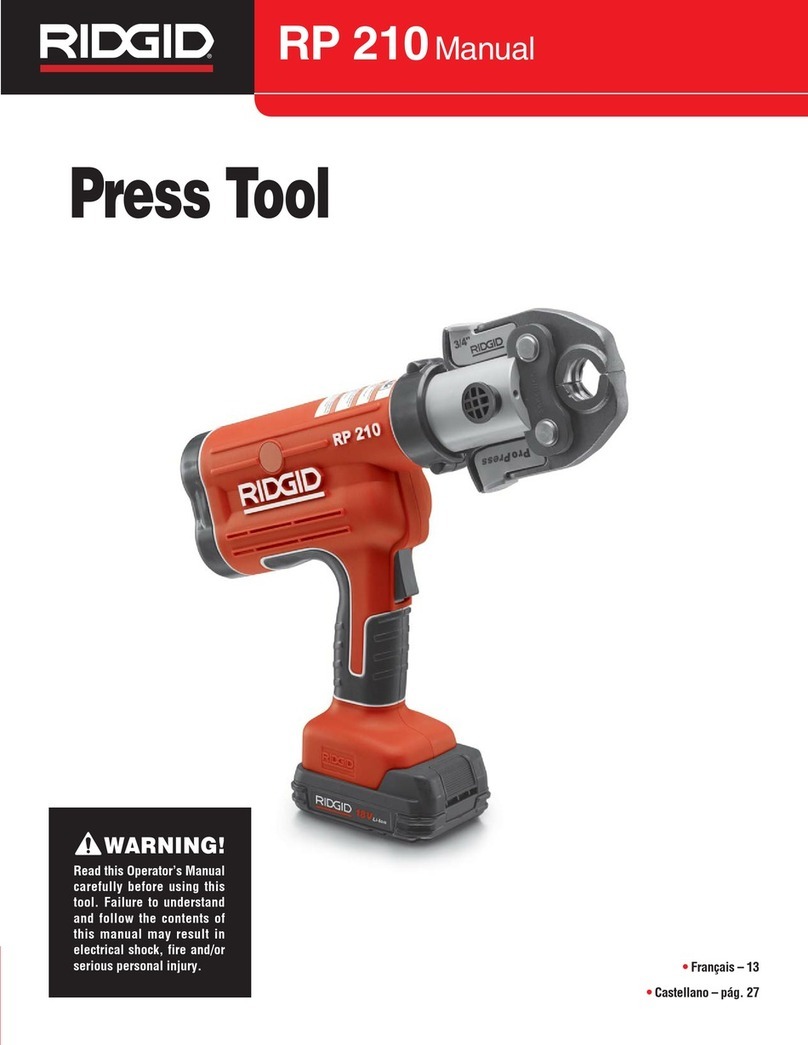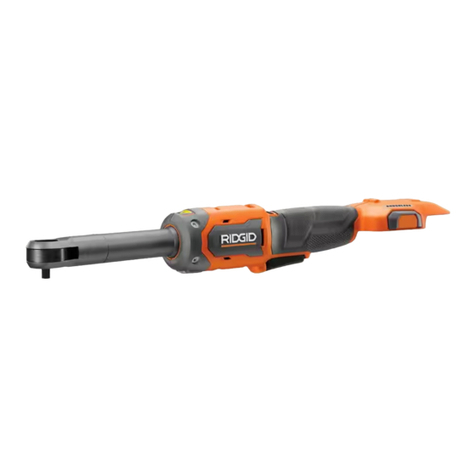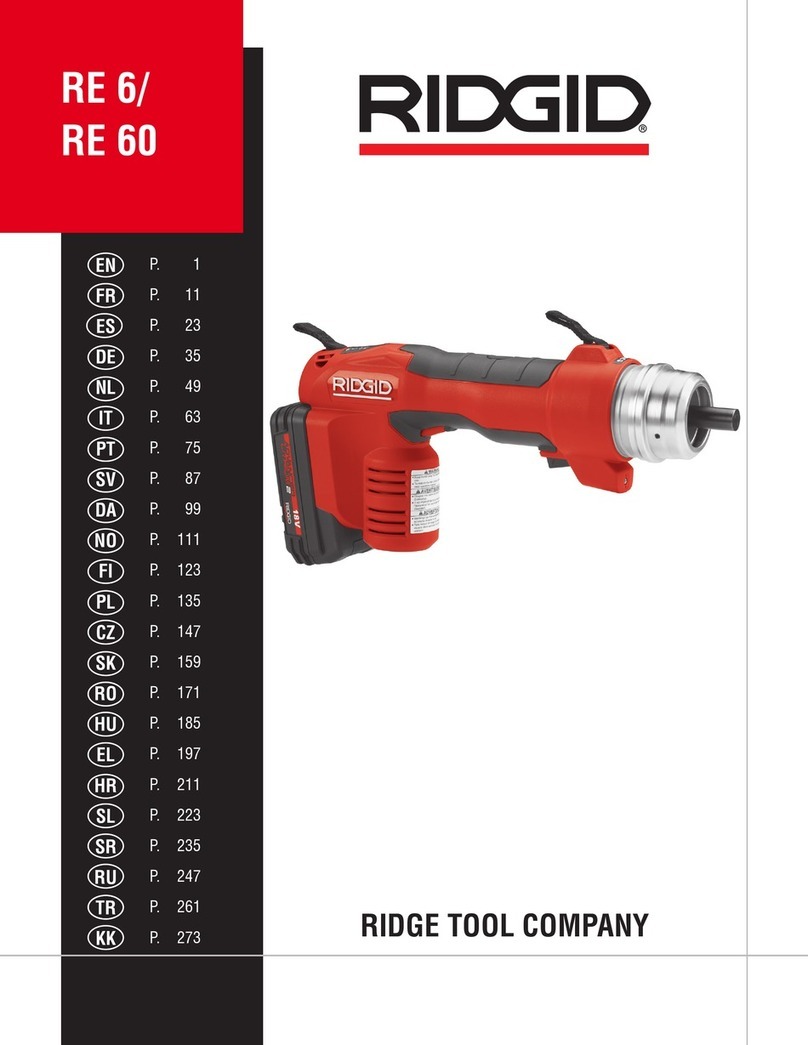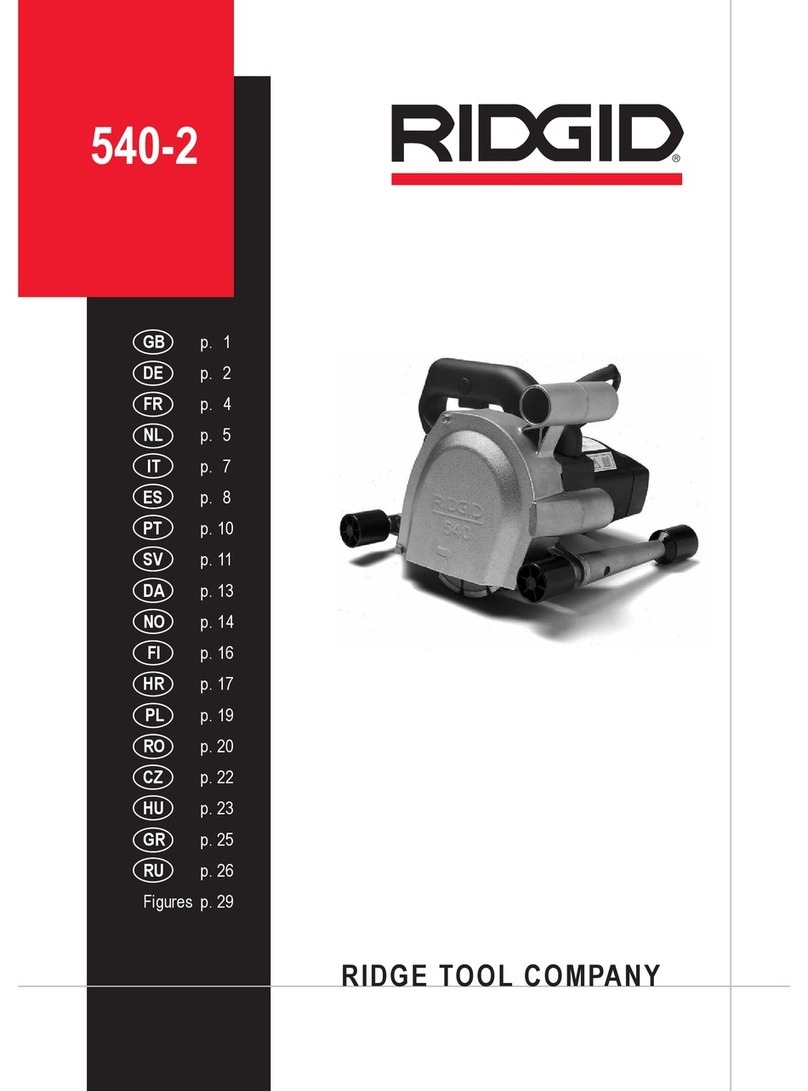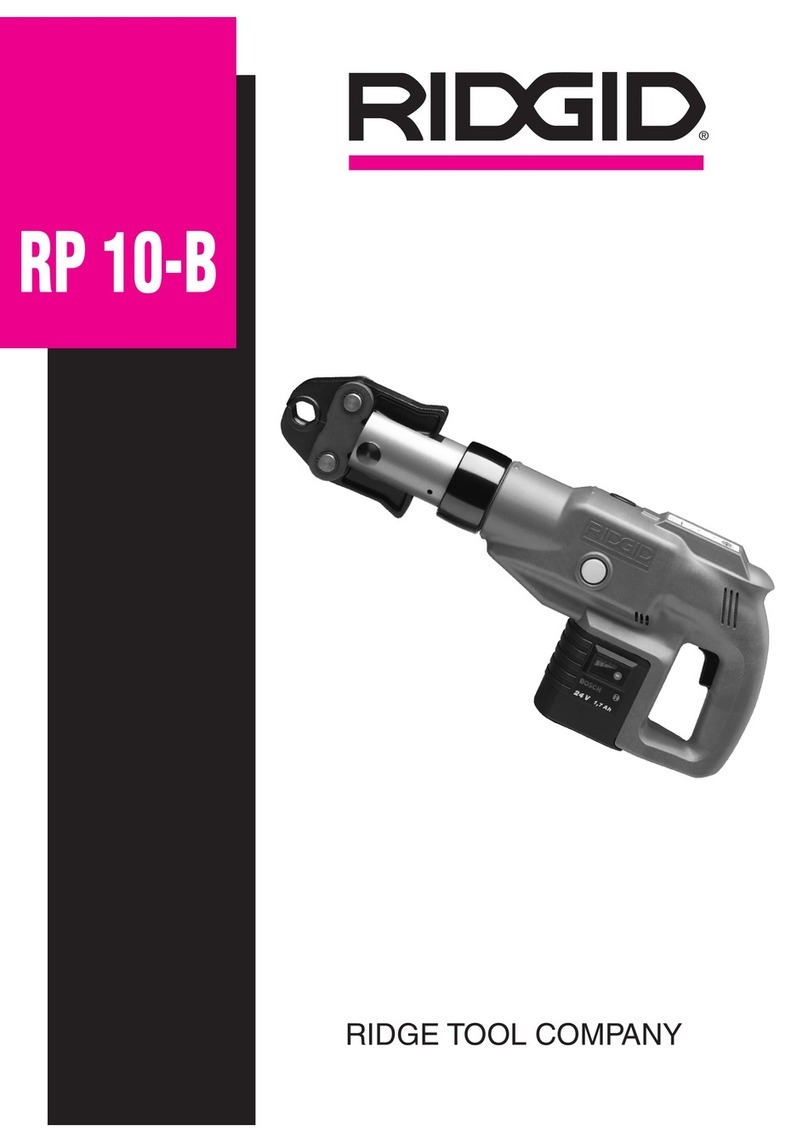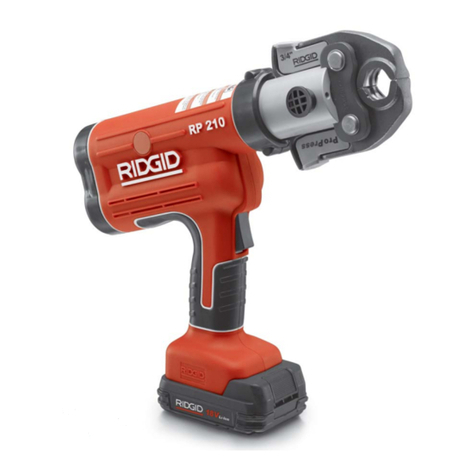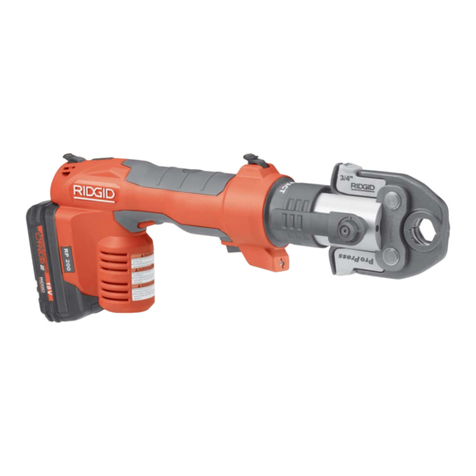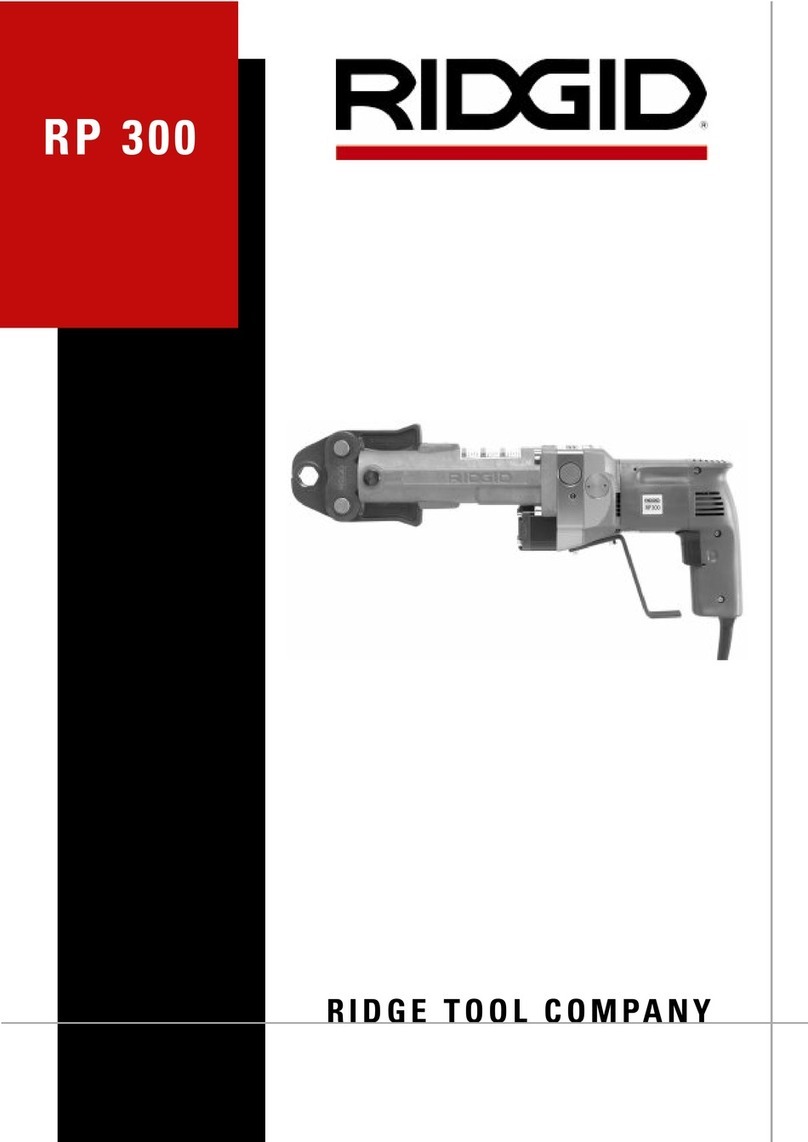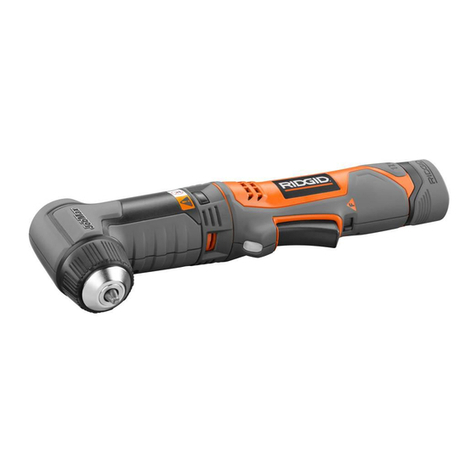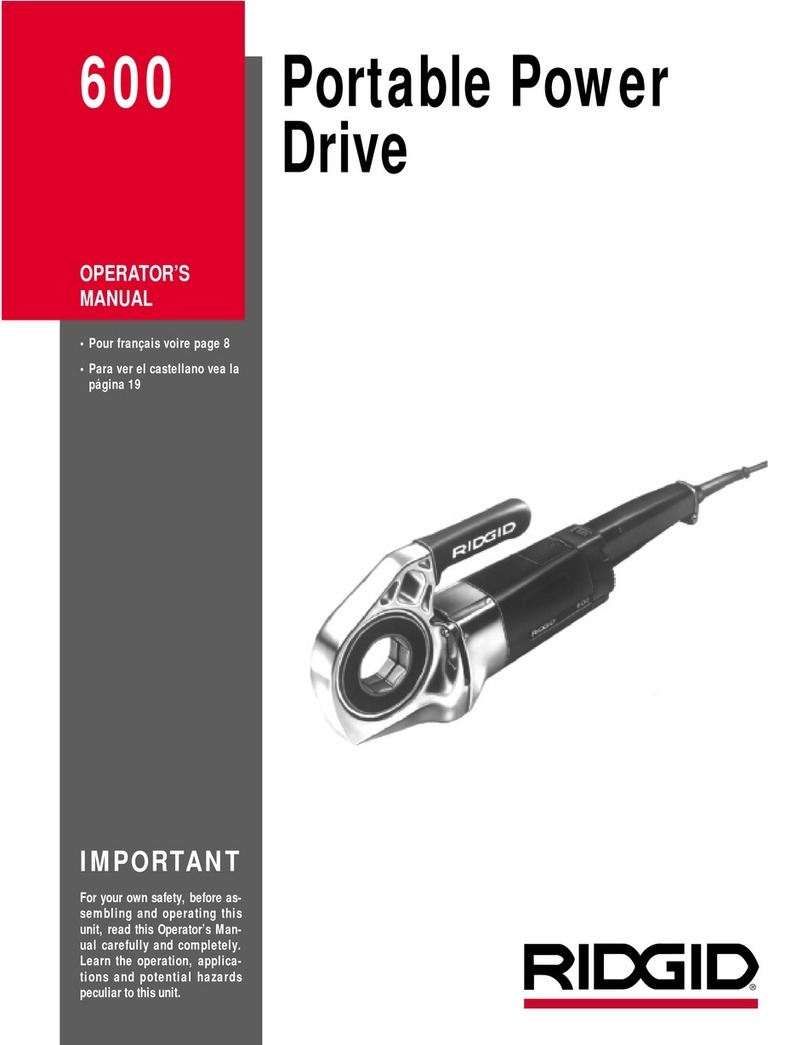
OPERATOR’S MANUAL
MANUEL D’UTILISATION
MANUAL DEL OPERADOR
R2200 ROUTER WITH R2901
MOTOR AND R2911 FIXED BASE,
R2200 TOUPIE AVEC R2901 MOTEUR ET
R2911 BASE FIXE
R2200 FRESADORA CON R2901 MOTOR Y
R2911 BASE FIJA
To register your RIDGID
product, please visit:
register.RIDGIDpower.com
Pour enregistrer votre
produit de RIDGID,
s’il vous plaît la visite :
register.RIDGIDpower.com
Para registrar su producto
de RIDGID, por favor visita:
register.RIDGIDpower.com
TABLE OF CONTENTS
****************
General Power Tool Safety
Warnings............................................ 2-3
Router Safety Warnings .........................4
Symbols .................................................5
Electrical.................................................6
Features ............................................. 6-7
Assembly................................................7
Operation ......................................... 8-12
Adjustments .........................................13
Maintenance.........................................14
Accessories..........................................14
Illustrations..................................... 15-18
Parts Ordering and
Service....................................Back page
TABLE DES MATIÈRES
****************
Règles de sécurité relatives aux
outils électriques................................ 2-3
Avertissements de sécurité relatifs
toupie.....................................................4
Symboles ...............................................5
Caractéristiques électriques ..................6
Caractéristiques ................................. 6-7
Assemblage............................................7
Utilisation ......................................... 8-12
Réglages ..............................................13
Entretien...............................................14
Accessoires..........................................14
Illustrations..................................... 15-18
Commande de pièces et
dépannage........................... Page arrière
ÍNDICE DE CONTENIDO
****************
Advertencias de seguridad para
herramientas eléctricas .....................2-3
Advertencias de seguridad
fresadora .............................................. 4
Símbolos .............................................. 5
Aspectos eléctricos.............................. 6
Características ..................................6-7
Armado................................................. 7
Funcionamiento...............................8-12
Ajustes................................................ 13
Mantenimiento.................................... 14
Accesorios.......................................... 14
Ilustraciones ..................................15-18
Pedidos de piezas y
servicio .............................Pág. posterior
Includes: Router Motor, Fixed Base, Router
Table Attachment Screws (3), 1/4 in. Collet
Adaptor, 1-1/4 in. Vacuum Adaptor, Vacuum
Adaptor Screws (2), Centering Tool (includes
cone and pin), Collet Wrench, T-Handle
Wrench, Tool Bag, Operator’s Manual
Inclut : Moteur de toupie, base fixe, vis de
fixation de table à toupie (3), adaptateur
de collet de 6 mm (1/4 po), adaptateur de
sac de 1-1/4 po (32 mm), vis d’adaptateur
d’aspiration (2), outil de centrage (comprend
un cône et une goupille), clé à collet, clé en
T, sacoche, manuel d’utilisation
Incluye: Motor de la fresadora, base fija, tornillos
del aditamento de mesa para fresadora (3),
adaptador para portaherramientas de 6 mm (1/4
pulg.), adaptador para aspiradora 32 mm (1-1/4
pulg.), tornillos del adaptador de la aspiradora
(2), centrador (incluye cono y clavija), llave para
portaherramientas, llave de mango en “T”, bolsa,
manual del operador
WARNING:
To reduce the risk of injury, the
user must read and understand
the operator’s manual before
using this product.
AVERTISSEMENT :
Pour réduire les risques de
blessures, l’utilisateur doit lire
et veiller à bien comprendre
le manuel d’utilisation avant
d’utiliser ce produit.
ADVERTENCIA:
Para reducir el riesgo de
lesiones, el usuario debe leer
y comprender el manual del
operador antes de usar este
producto.
SAVE THIS MANUAL FOR
FUTURE REFERENCE
GUARDE ESTE MANUAL
PARA FUTURAS CONSULTAS
CONSERVER CE MANUEL
POUR FUTURE RÉFÉRENCE

